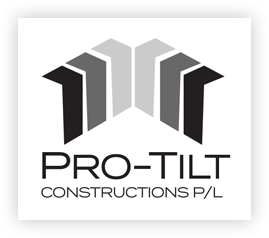Tilt-up Construction: Know the Structural Integrity of Tilt-up Panels in Commercial Buildings
12 January 2024
Learn the structural integrity of tilt-up panels in Melbourne CBD commercial buildings with Protilt’s guide to tilt-up construction. Call (03) 9359 0088.
A common way to build commercial buildings that have been around for over a century is tilt-up construction. It’s a way to build walls by pouring concrete on-site and then moving the blocks into place. Let’s explore and understand the structural integrity of Tilt-up Panels in commercial buildings, how they offer versatility in design without compromising on structural stability, and how Architects can incorporate various aesthetic elements into the concrete panels.
Unveiling Tilt-Up Construction’s Structural Integrity
Tilt-Up Construction is renowned for its robust structural design, ensuring that commercial buildings stand the test of time. The method involves casting concrete panels on-site, a process that results in panels with inherent strength and durability. The panels, once cured, are then tilted into a vertical position, forming the outer shell of the building. This technique provides commercial structures with a solid foundation, offering unparalleled resistance to environmental factors and ensuring long-term structural stability.
How Tilt-Up Construction Offers Versatility in Design Without Compromising on Structural Stability
The key to Tilt-Up Construction’s design flexibility lies in its unique process. Unlike traditional methods where precast panels are manufactured off-site and transported to the construction site, Tilt-Up involves casting concrete panels directly on-location. This on-site casting enables architects to tailor the panels to meet specific design requirements, allowing for a level of customisation that goes beyond the limitations of precast alternatives.
In essence, Tilt-Up Construction marries design versatility with structural stability, offering a construction method that not only meets the demands of modern architecture but also exceeds expectations. The collaborative nature of Tilt-Up projects between architects and construction teams, exemplified by leaders like Protilt Construction, ensures that the design vision is seamlessly translated into a structurally sound and visually stunning commercial building.
How do Architects Incorporate Various Aesthetic Elements into the Concrete Panels?
Architects play a crucial role in enhancing the visual allure of commercial structures through Tilt-Up Construction by seamlessly blending aesthetics with concrete panels. This innovative method allows for the integration of design and structure, resulting in captivating facades. Key techniques include textured finishes achieved through sandblasting for depth, imprints for unique patterns, and integral colouring or staining for vibrant hues.
Architectural reveals and recesses add dimension, while custom form liners and creative moulds offer unique shapes. Artistic elements like murals and embedded materials elevate the aesthetic, and strategic panel arrangements, varying sizes, and layered facades enhance the overall appeal of Tilt-Up buildings.
By embracing these techniques, architects can leverage Tilt-Up Construction to bring their design visions to life, creating commercial buildings with facades that not only captivate the eye but also contribute to the overall architectural identity of the structure. Protilt Construction, with its expertise in Tilt-Up projects in Northern Melbourne and the Central Business District, collaborates closely with architects to turn these creative visions into reality. The result is a new era in commercial architecture, where aesthetics and structural integrity seamlessly coexist.
Optimized by: Netwizard SEO

